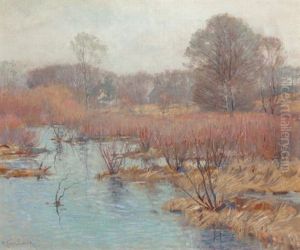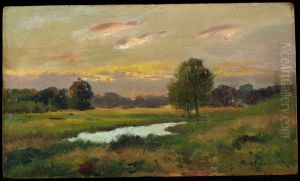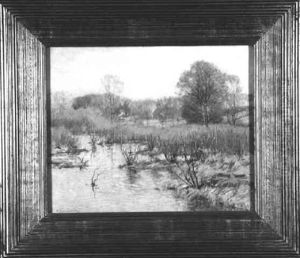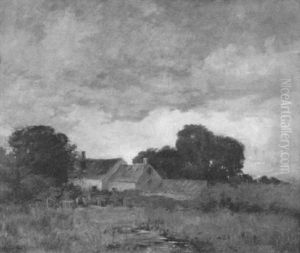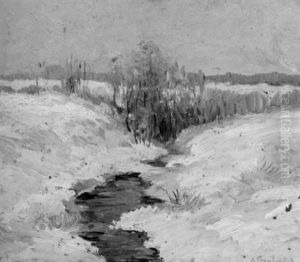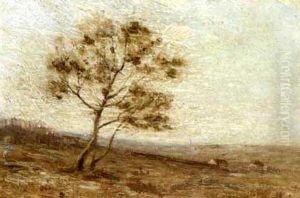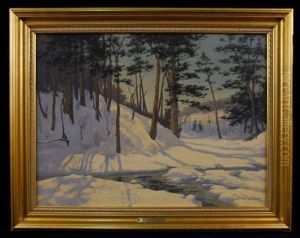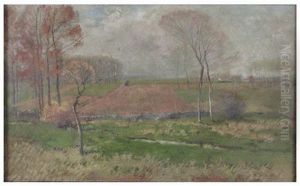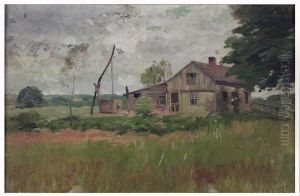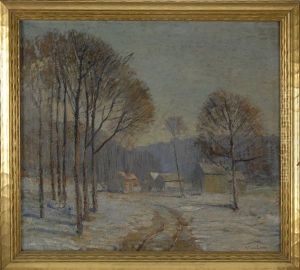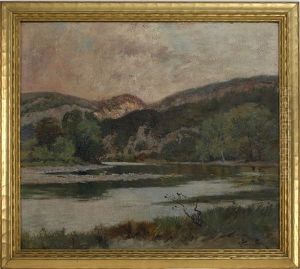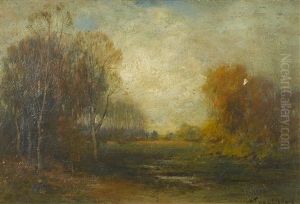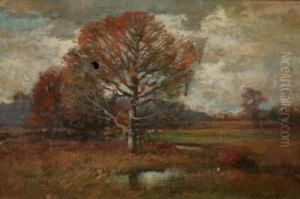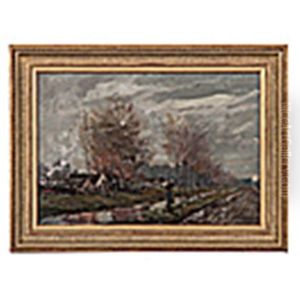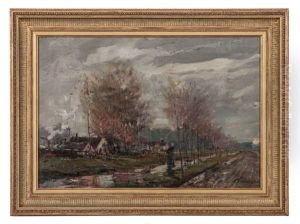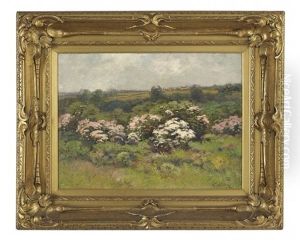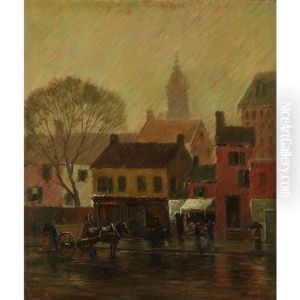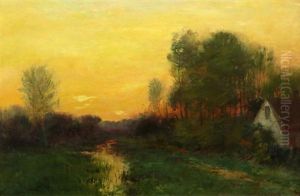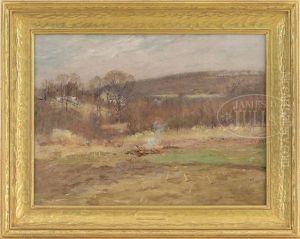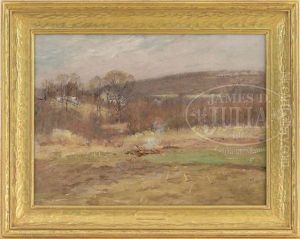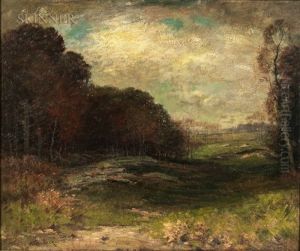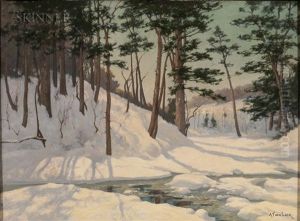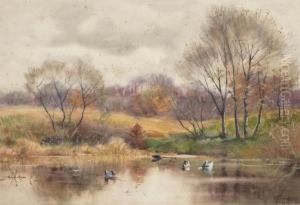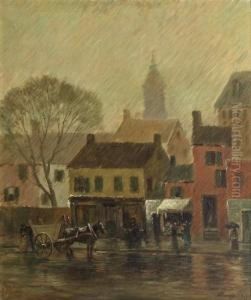Alexander Theobald Van Laer Paintings
Alexander Theobald Van Laer was an American artist, best known for his landscape paintings. Born on October 21, 1857, in Auburn, New York, Van Laer was part of the second generation of Hudson River School artists, a group known for their romantic and often dramatic depictions of the American landscape.
Van Laer began his formal art education under the guidance of his father, who was also an artist, and later continued his studies in Europe. He spent significant time in the artist colonies in Pont-Aven, Brittany, and in the Netherlands, where he was influenced by the Hague School of art, a movement that focused on realism and the depiction of everyday life. His experiences in Europe had a profound impact on his style, leading him to adopt a more impressionistic approach to his work.
Upon returning to the United States, Van Laer settled in the Northeast, where he became an active member of the art community. He was involved with several art organizations, including the American Watercolor Society and the National Academy of Design. Throughout his career, he exhibited his work widely and earned recognition for his contributions to American landscape painting.
Van Laer's body of work is characterized by its focus on the rural landscapes of New England and New York State. His paintings often feature tranquil scenes of the countryside, showcasing his skill in capturing the changing effects of light and atmosphere. He had a particular interest in painting old buildings and structures, imbuing them with a sense of history and nostalgia.
Alexander Theobald Van Laer's contribution to American art continued until his death on June 1, 1920. His paintings remain appreciated for their technical skill and for providing a visual record of the American landscape during a period of significant change and development.
